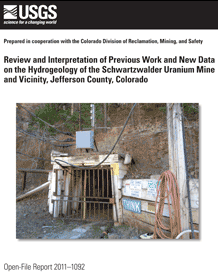I have written more than twenty blog posts about radioactive waste. It is one of the most serious problems with uranium mining, processing and power generation. I have covered a lot of different schemes to deal with radioactive waste in other blogs posts. Today, I am going to focus on something called bioremediation.
“Bioremediation” is a process where micro-organisms or plants remove pollutants through their metabolic processes. Such micro-organisms or plants are called “bioremediators.” Naturally occurring bioremediators may be utilized or either natural or tailored micro-organisms or plants may be added to the polluted area. In addition, various types of fertilizers can be added to speed up the growth of the bioremediators. “In situ” bioremediation refers to the use of bioremediators where the pollution is located. “Ex situ” bioremediation refers to a process where the polluted material is removed from the original site and the bioremediation takes place somewhere else.
Heavy metal pollutants can be difficult to remove with micro-organisms but there are some plants that are able to absorb heavy metals and removed them from polluted soil or water. This process is called “phytoremediation”. The plants can be harvested and then burned to further concentrate the heavy metals. The resultant concentrated pollutants can then be disposed of or recycled for industrial use. Phytoremediation is inexpensive, easy to monitor, recovers potential valuable metals and is one of the least harmful methods of bioremediation. On the other hand, phytoremediation is limited to the surface and roots zone of the plants, some metals may leach into the ground water, plant growth may be slow and limited by the toxicity of the metals. Phytomining is the use of phytoremediation for the express purpose of extracting valuable minerals from soil and/or water.
Uranium contamination of soil and water can be treated with bioremediation. A first step is the use of an anaerobic bacterium, Clostridium, to stabilize uranium in nuclear wastes. Radionuclides are dissolved into solution by the action of enzymes or the production of organic acids by the bacteria. Then the radionuclides in the solution are precipitated by enzymes into stable solid mineral phases. Next the precipitate is treated to extract the radionuclides which can then be recycled or disposed of.
The State of Colorado has been pressuring Cotter Corporation over pollution at the site of Schwartzwalder uranium mine near Canon City, Colorado. Uranium from the operation has been leaking out of the mine and tainting ground water and nearby creeks which flow into a reservoir that serves the Denver area. Cotter has decided not to reopen its uranium milling operation at the mine and is going to move forward with a final clean up.
Cotter is going to mix molasses and alcohol with filtered water pumped from the mine and discharged into Ralston Creek. The water will then be drawn from the creek and injected into the two thousand foot deep mine. Bacteria inside the mine will thrive in the molasses and alcohol mix, consuming the uranium and producing solid particles which will drop to the bottom of the mine. If things go as planned, this water cleaning method will be much cheaper than other possible approaches. And, if it works, the method can be applied to tens of thousands of abandoned polluted mines in the United States.
